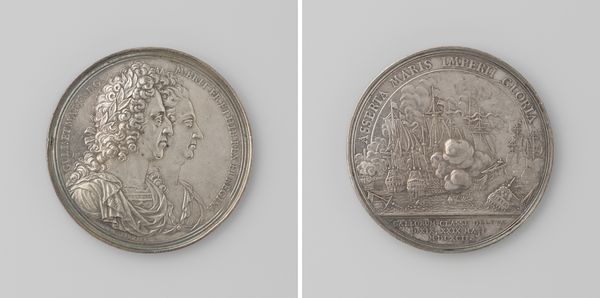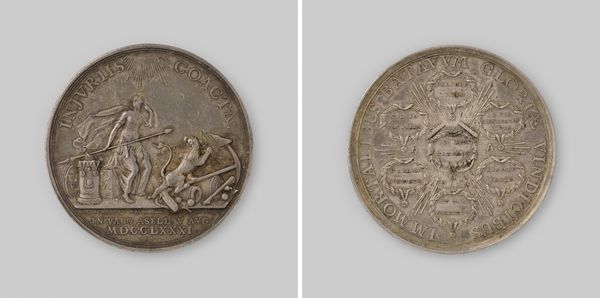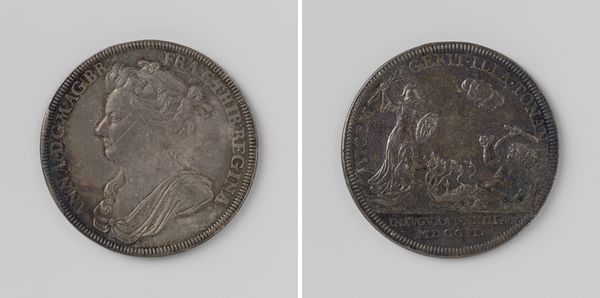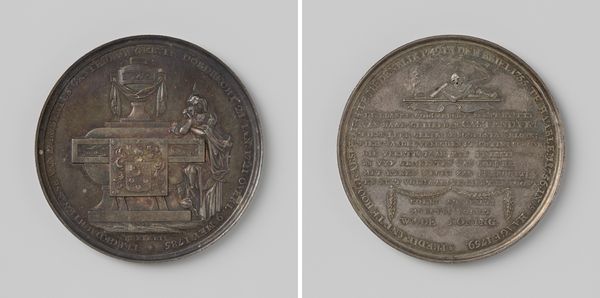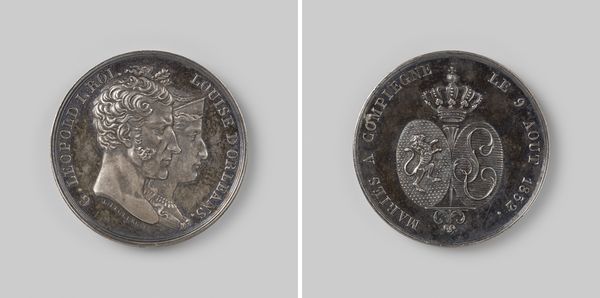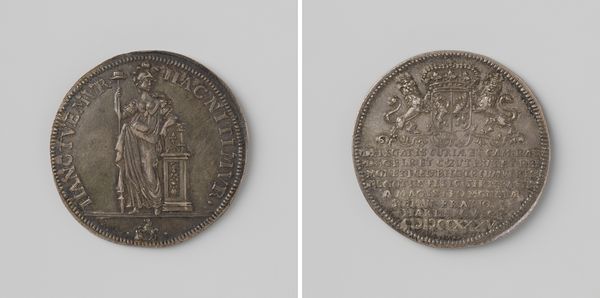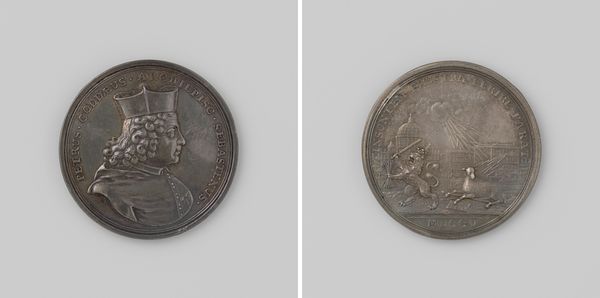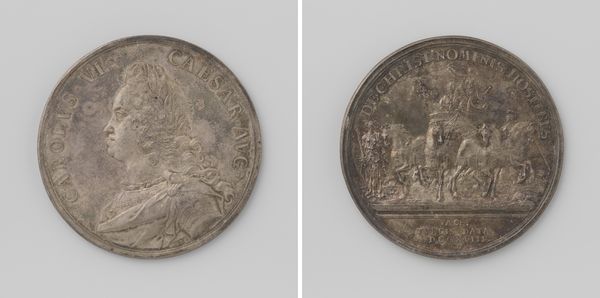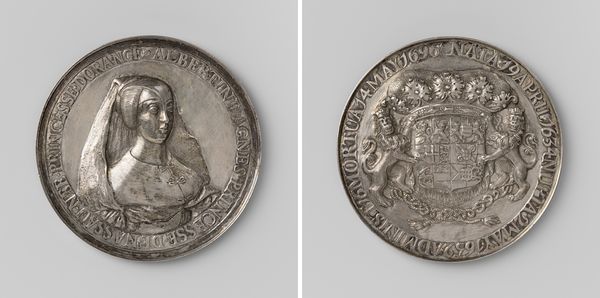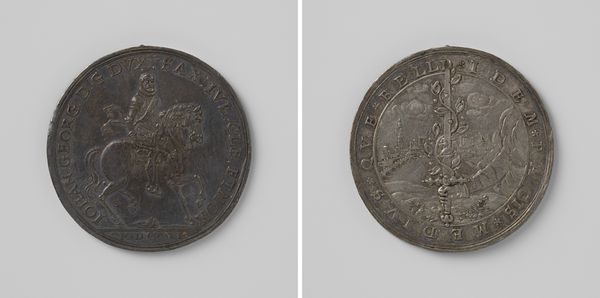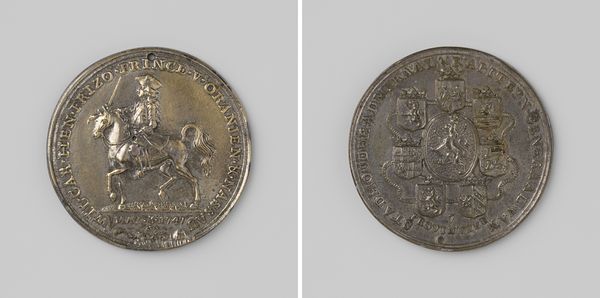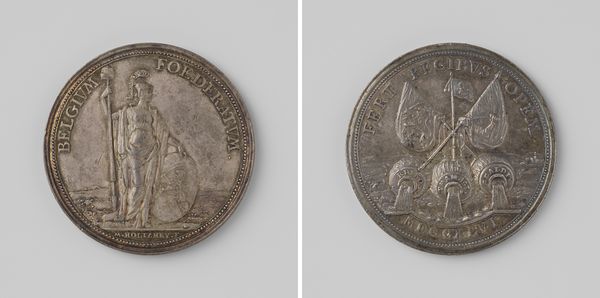
Eerste eeuwfeest van het aalmoezeniersweeshuis te Amsterdam 1766 1766
0:00
0:00
Dimensions: diameter 4.9 cm, weight 44.54 gr
Copyright: Rijks Museum: Open Domain
Curator: Today, we’re examining "Eerste eeuwfeest van het aalmoezeniersweeshuis te Amsterdam 1766," a metal relief by Johan George Holtzhey commemorating the centenary of the Amsterdam almshouse orphanage in 1766. Editor: It’s quite moving, actually. There's a maternal figure presiding over children, and despite being a hard metal surface, it exudes a remarkable warmth, almost a plea for compassion. Curator: Indeed. The composition of the scene on one side depicts an allegorical representation of Charity. Note how the artist employs strong diagonals with the seated female figure connecting with the children, drawing your eye to the orphanage depicted overhead, reinforcing the message of benevolent care. Editor: Placing this within its historical context, such orphanages arose in response to widespread poverty and abandonment, especially in burgeoning urban centers like Amsterdam. It’s easy to aestheticize charity, but what structural factors allowed the city to fund such programs? What was life really like inside the orphanage walls? Curator: Those are vital points to consider. Structurally, on the reverse of the piece, notice the carefully arranged coats of arms belonging to the benefactors, meticulously rendered with an array of heraldic symbols that would communicate status and power, essential for Baroque sensibilities. Editor: Exactly. The medal seems designed to signal the social responsibility of the elite, subtly obscuring questions about who holds power, and whose labor actually creates the wealth they charitably distribute. It encourages a narrative that favors individual generosity, perhaps instead of calling attention to the city’s role. Curator: Nevertheless, technically, the refined tooling is noteworthy. It reflects sophisticated understanding of light and shadow to imbue depth and realism despite its relatively small size. Editor: Agreed. The medal as a symbolic gesture freezes a complex system of power in place, reflecting, on one level, the prevailing values and anxieties of its time regarding poverty and its solutions. Thank you for examining this artwork with me today. Curator: The medal offers valuable insights into the aesthetics of power and compassion within the 18th-century Dutch Republic, encouraging a conversation about charity, authority and representation across time.
Comments
No comments
Be the first to comment and join the conversation on the ultimate creative platform.
